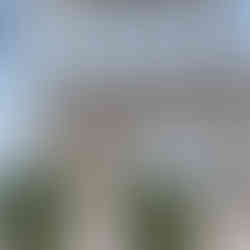Bourgogne XII- The quaint towns in Bourgogne
- Paolo Mittiga

- Jul 26, 2019
- 7 min read
Besides the visits to the amazing vineyards and besides the fact that everything in Bourgogne gravitates around the wine production, there are many beautiful small quaint medieval Hamlets to visit. During the first week of June 2019 we visit few of them here what they are and their history.
Autun

Autun is really the true capital of Burgundy, due to its antiquity and authenticity. At the time of Celtic independence, the Aedui.... declared themselves to be the «allies of the Senate and of the Roman People». They despised the Lingons of the north, the inhabitants of the huts on which Dijon would one day stand.
They feared the Sequani, on the other side of the Saone, already a turbulent people like their descendants, the Comtois. They entertained relationships of power with the Bituriges - the «kings of the world» - to the west and with the troublesome Arverni. They were attracted by Rome. The «Provincia» was not so far away, with its triumphal columns, trading basilicas where products from the Orient were amassed, and villae surrounded by vineyards where aristocrats, dressed in white togas on which the purple band of the senatorial order stood out, walked amidst slaves bent over the vines... . . . .
At the foot of the abandoned fortress of Bibracte they founded their new capital Augusloclunum, Autun. The actual name of the town: the ancient Gallic word for «fortress», together with the Emperor's patronymic , its motto «soror et aemula Romae» and its layout, show their desire to emulate their conquerors. It became one of the most important towns in the west with its forum, Capitolian temple, palaces, houses decorated with marble and mosaics, two theatres, circus, and the imposing walls over six kilometres long interrupted by monumental gates. Schools of great renown established themselves here. One of their teachers, Eumene, was a minister of the Emperor Constance in the IIIrd century. His shrewd fellow-countrymen asked him to intervene in order to protect, from the revenue authorities, the of the clarissimae which stretched, with regards to the vineyards, as far as the Cote of the “pagus arebrignus” Beaune and Nuits Saint-Georges.
Autun naturally became the seat of the hishopric of Burgundy. In 1789. its owner was still the «born-prince» of the «Etats» representing the Province. He was a very singular person: Maurice de Talleirand-Pèrigord, who had a prestigious career throughout the storms of the Revolution, the Empire and the monarchies of the XIXth century: his mind was certainly worth more than his soul. His predecessors, who believed in God, had built the Cathedral of Saint-Lazare, a masterpiece of Romanesque art. We can understand just how baffling this vision, rooted in the land of the Celts, nourished by an ancient culture and reinvented by Cluny, can be by reading these notes made by Stendhal in front of the capitals ofAutun: «God! How ugly...»
Saint-Etienne was begun around 1120 by the bishop, Etienne de Bagé, who had been fascinated by the building yard at Cluny. Pope Innocent II consecrated the first altar in the midst of stone-cutters and carts. Despite the many readjustments and additions - up until the XVIth century - the building still preserved its Romanesque mark. The motif on the Arroux Gate was copied for the arch of the triforium and for an external mural decoration; everywhere old style fluted pillars have replaced encased columns. The sculptures, a sort of stone Bible, this side of Rome, are out of the dark ages. A tremendous personality - attested by a vague signature: Gislebertus - gave them a dramatic dimension.
The Rolin Museum is exciting. It should count amongst its treasures ofAutun's illustrious past, the Virgin of Chancellor Rolin by Jan van Eyck, the unforgettable confrontation of the minister of the Dukes ofBurgundy, in a brown and gold brocade suit, and the nude Child on his mother's knee. Napoleon decided that this painting, which the compassionate Rolin family of Autun had destined for the cathedral, «was too beautifui to stay in the provinces» and had it assigned to the Louvre. However, just the Eve lying down, on one of Saint-Lazare's architraves, is enough to motivate a visit. This is the most feminine sculpture of the Romanesque Middle Ages, the most seductive and perfect medieval nude, the Olympia of the XIIth century. The Primitive Hall contains the Nativity by the Master of Moulins and the Virgin ofAutun which is still discreetly marked by its XVth century polychromy. The very interesting collection of XIXth century paintings is being constantly ei^ riched. The Museum itself, located in the palace belonging to the famous family which gave Beaune its HotelDieu, is quite charming.
Do not forget to visit Roman medieval, classical Autun - with the surprising XIXth century touch of its renewed shopping arcade--a dignified and lively town, which has been very well preserved. You will see children wearing sky-blue service caps: they are pupils of the military collegelocated in the ancient castle. They are preparing, through important scientific studies, to become officials of the armies of the Republic. They are allowed to dream: Bonaparte was one of them...
CHÂTEAUNEUF
As we approached Châteauneuf, we felt excited, it was almost like going up to the hill on a black horse in A Knight suit, it was like the time got frozen and we were back in a magical time machine into medieVal time.
Châteauneuf is dominated by its château, which was given in December 1456 by Philip the Good to Philippe Pot, whose renovations and fortification gave to it the aspect it retains today, with the arms of Pol and his orders of the Golden Fleece and of Saint-Michel.[2] The medieval bourg that surrounds it is a member of the Les Plus Beaux Villages de France ("The most beautiful villages of France") association.
The Château de Châteauneuf, also known as the Château de Châteauneuf-en-Auxois, is a 15th-century fortress in the commune of Châteauneuf, 43 km from Dijon, in the Côte-d'Or département of France. It is a vast stone building, 75 metres in length and 35 metres broad, situated on a rocky outcrop 475 metres above the surrounding plains. It dominates the valley of Canal de Bourgogne.
The castle was built in 1132 by Jean de Chaudenayfor his son Jehan, who took possession of it in 1175 and became Jean I de Châteauneuf. Facing the threat of the Hundred Years' War, the lords of Châteauneuf then built the powerful fortifications around the 12th century keep. After nine generations in the castle, the reign of the Châteauneufs ended in tragedy when in 1456 the last heiress, Catherine de Châteauneuf, was burnt alive for poisoning her second husband, Jacques d'Haussonville.
In 1457, Philippe le Bon, duke of Burgundy, offered the fortress to his advisor Philippe Pot, also of the Order of the Golden Fleece (French: ĺ'Ordre de la Toison d'or) and a knight of Saint Michael. He then modified the castle to make it more comfortable as a residence, in keeping with the style of the court of the Duchy of Burgundy. A chapel and a residence dated to this time were built out in the court of the castle, in the flamboyant Gothic architectural style. At multiple places in the castle one can find the device of Philippe Pot, « Tant L Valt ».
Philippe died in 1493 without leaving an heir, so the castle went to his brother Guy Pot, then via various alliances to Marie Liesse de Luxembourg. With their entrance into the convent, the castle then passed to Charles de Vienne, count of Comarrin, and remained in the hands of this family for the next 150 years. In 1767, Louis Henri de Vienne sold the castle to a rich banker.
During the French Revolution, all royal symbols and armorial bearings were defaced or destroyed. The castle was then auctioned and passed through various hands until 1936, when the count George de Vogue donated it to the state and Châteauneuf and its neighbouring village were declared as protected historical monuments (French: monument historique).
Semur-en-Auxois
Semur-en-Auxois, or love at first sight. This< marvellously preserved and lively town haS kept the appearance of a «country» capital. The town stands inside its walls which dominate the clear waters of'the Armaçon, just like the radiant towns of medievaì miniatures, in the centre of a natural region with a charming personality.
Auxois was rich. For centuries an intelligent balan, reigned there. Cultivation and grasslands were alternated; the meadows themselves were divided into the arid hillside pastures and the fertile «fattening» lands of the valleys; forging, weaving, and brilliant craftwork diversified the town's resources. The main type of breeding - at least according to the spirit of the community - was basically that of horses. In the Middle Ages the horse was the instrument of combat that also made it possible to increase agricultural yield: in both cases, horses were a sign of power and modernity. Up until the last war, the inhabitants ofAuxois were proud of their irreplaceable rôle as «energy suppliers»: the strongest colts went to form the great draugh-horses of the plains and cereal-growing plateaux, the more tractable colts cut furrows between the rows of stumps on Hills, or transported timber from the forests.
The town of Semur has preserved its appearance of a
XIVth and XVth century fortress, when it was one of the most powerful fortified towns in the duchy, able to withstand the English Royal army. The towers: Orle dor
(Gold barrier), Gehenne, Prison and Margot are particularly impressive when seen from ibe Point Joly which crosses the Armacon to the west. By following the base of the town-walls it is possible to climb up again along the pink granite slope and enter the town. A beautiful tree-covered walk dominating the valley leads back southwards to the church whose two square towers command the view.
The church of Notre-Dame is a good example of a triple-erected Gothic church, introduced in Burgundyat thebegmning of the XIIIth century and originated in the worÎcrooms of Picardie, l'Ile-de-France and Champagne.
An ancient chronicle declares that the inhabitants of Semur are pleasant people «who like to meet foreigners)}. In effect, this is a pleasant town to visit especially by foot. There is a charming museum: the Corots were kindly repatriated by Japanese collectors who had been offered them by unscmpulous people; there is a library which includes, amongst its other treasures, the MissalofAnne of Brittany, there is an adorable theatre in which it is possible to imagine Madame de Rénal trying not to look towards the stalls at the handsome face of Julien Sorel... There are some important classical constructions: old convents and magistrates’ buildings which only offer the vestibules and dignified gates of prohibited retreats.
As we returned from visits of these fascinating gorgeous towns, we planned our next stop: Chablis ... to the next blog. Follow us on the Wine Voyager ..


































































































































































Comments